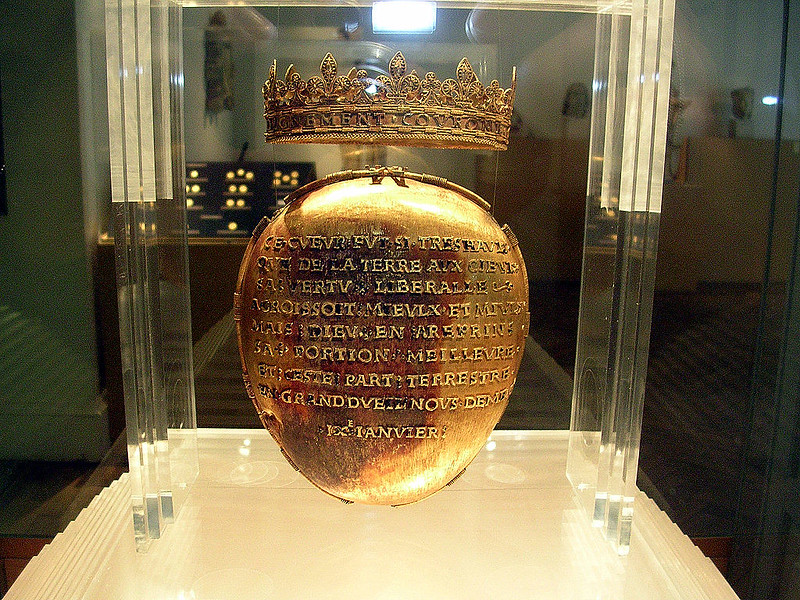This story began due to Hungary. The Habsburgs, which had gained a
considerable part of Europe, were not averse to receive neighboring
Hungary as well, despite the fact which it shrank by 70% after the fight
with Turkey. Hungarians, by the way, initially were not Europeans at
all, but representatives of the nomadic Finno-Ugric people, who came
from the central provinces of modern Russia, so fellows did not feel any
genetic unity with the Austrians. During the whole story, after Austria
attempted to attract Hungary, it received a symmetrical rebuff.
This time the same thing happened. After the ruler of Hungary died in battle against the Turks, the Emperor of the Holy Roman Empire Ferdinand I immediately claimed his rights to the Hungarian vacant throne, as this fellow was married to the ex-ruler's sister, and was even ready to prove his rights to these lands by force. Simultaneously, a new native ruler, Janos Zapolya, drew himself, who did not hesitate to resort to the aid of the Ottoman Empire in order to fight off the attacks of Austria. The Sultan of the Ottomans then was Suleiman I, who is known as Suleiman the Magnificent. This fellow was nicknamed Magnificent in Europe, because this sultan was one of the biggest supporter of Western culture and often invited prominent European artists to his court. So the most famous image of this sultan was painted by none but Titian. The Turks call him Suleiman Kununi, or Suleiman the Legislator, since the fellow published a code of laws according to which the population of the Ottoman Empire lived for a long time. In general, under Suleiman I his Empire as well reached its apex. As you can see, the guy was intelligent, and therefore the Sultan can not pass the opportunity to get vast territories for his empire for free. Ferdinand felt the danger and made an attempt to peacefully negotiate with Suleiman, but his ambassadors returned from Istanbul without success. Suleiman dealt soon with Austria and sent his forces directly to the heart of Ferdinand's empire, to the city of Vienna. On the way, the fellow crowned Janos Zapolya in the long-suffering city of Mohache, making Hungary a satellite state, and then captured the city of Buda, today's capital of modern Hungary, Budapest. There Suleiman seated Zapolya on the throne as well. Due to severe weather and conditions similar to torrential rains, Suleiman's forces spent more time and effort than expected, so, after a some week siege, the forces had to retreat. For the Habsburgs, this looked a real miracle. The departing Turks again were unlucky with the weather and fellows suffered from an abnormally early snowfall. It was so strong strike to the forces of Sultan that the guy managed to consolidate in a campaign against the Habsburgs only in 3 years.
After this engagement war among the Austria and the Ottoman Empire continued practically 200 years, after which Turkey lost power and surrendered most of its territories. However, this is an issue for a separate post.
This time the same thing happened. After the ruler of Hungary died in battle against the Turks, the Emperor of the Holy Roman Empire Ferdinand I immediately claimed his rights to the Hungarian vacant throne, as this fellow was married to the ex-ruler's sister, and was even ready to prove his rights to these lands by force. Simultaneously, a new native ruler, Janos Zapolya, drew himself, who did not hesitate to resort to the aid of the Ottoman Empire in order to fight off the attacks of Austria. The Sultan of the Ottomans then was Suleiman I, who is known as Suleiman the Magnificent. This fellow was nicknamed Magnificent in Europe, because this sultan was one of the biggest supporter of Western culture and often invited prominent European artists to his court. So the most famous image of this sultan was painted by none but Titian. The Turks call him Suleiman Kununi, or Suleiman the Legislator, since the fellow published a code of laws according to which the population of the Ottoman Empire lived for a long time. In general, under Suleiman I his Empire as well reached its apex. As you can see, the guy was intelligent, and therefore the Sultan can not pass the opportunity to get vast territories for his empire for free. Ferdinand felt the danger and made an attempt to peacefully negotiate with Suleiman, but his ambassadors returned from Istanbul without success. Suleiman dealt soon with Austria and sent his forces directly to the heart of Ferdinand's empire, to the city of Vienna. On the way, the fellow crowned Janos Zapolya in the long-suffering city of Mohache, making Hungary a satellite state, and then captured the city of Buda, today's capital of modern Hungary, Budapest. There Suleiman seated Zapolya on the throne as well. Due to severe weather and conditions similar to torrential rains, Suleiman's forces spent more time and effort than expected, so, after a some week siege, the forces had to retreat. For the Habsburgs, this looked a real miracle. The departing Turks again were unlucky with the weather and fellows suffered from an abnormally early snowfall. It was so strong strike to the forces of Sultan that the guy managed to consolidate in a campaign against the Habsburgs only in 3 years.
After this engagement war among the Austria and the Ottoman Empire continued practically 200 years, after which Turkey lost power and surrendered most of its territories. However, this is an issue for a separate post.



